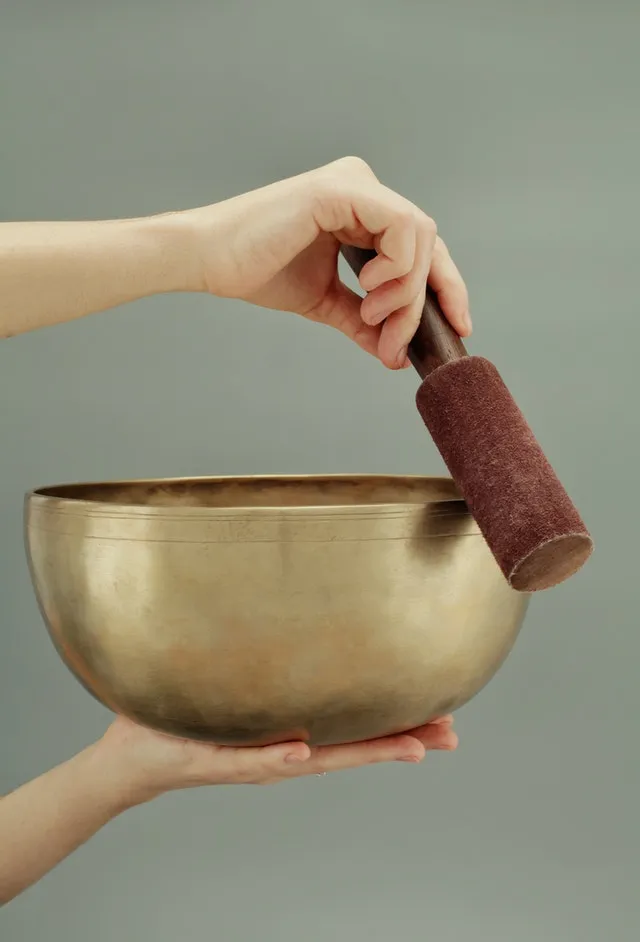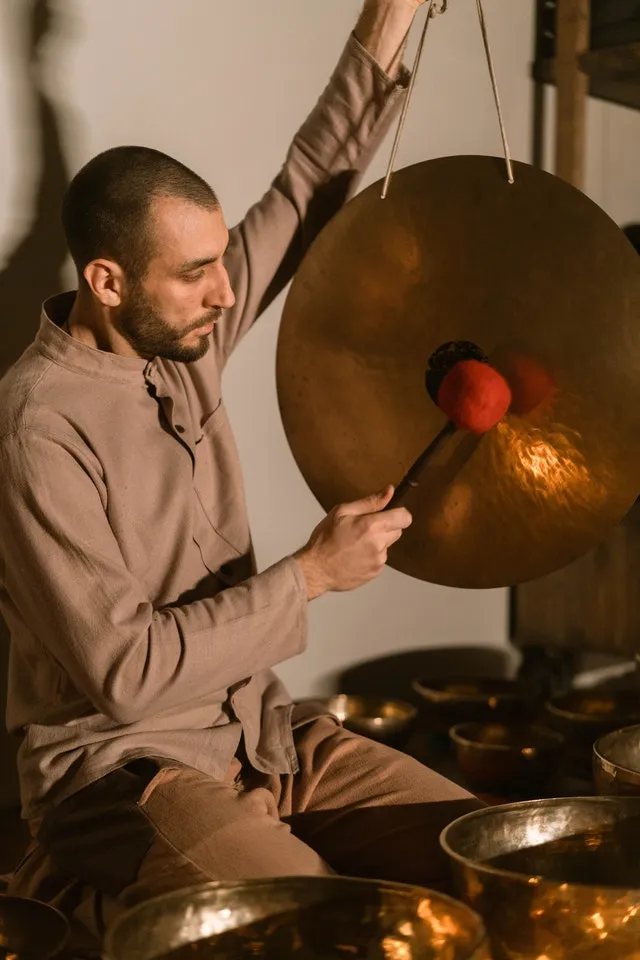Buenos días lectores. Hoy les traigo una primera entrega sobre Musicoterapia. Espero les guste.

La Musicoterapia como especialidad surge a mediados del siglo XX, en Inglaterra y Estados Unidos. Hay muchas definiciones de la misma. A continuación alguna de ellas:
Según la Federación Mundial de Musicoterapia, Musicoterapia es la utilización de la música y/o de sus elementos (sonido, ritmo, melodía y armonía) por un músico terapeuta calificado con un paciente o grupo, en un proceso creado para facilitar y promover comunicación, aprendizaje, movimiento, expresión, organización y otros objetivos terapéuticos relevantes, para así satisfacer las necesidades físicas, emocionales, mentales, sociales y cognitivas.
Para la National Association for Music Therapy (NAMT), es el uso de la música en la consecución de objetivos terapéuticos: la restauración, el mantenimiento y el acrecentamiento de la salud tanto física como mental. Es también la aplicación científica de la música para provocar cambios en el comportamiento. Dichos cambios facilitan a la persona el tratamiento que debe recibir, a fin que pueda comprenderse mejor a sí misma y a su mundo, para poder ajustarse mejor y más adecuadamente a la sociedad.
La Musicoterapia tiene como objetivo desarrollar, potenciar y/o restaurar las funciones del individuo de manera tal que éste pueda lograr una mejor integración intra y/o interpersonal y, consecuentemente, una mejor calidad de vida a través de la prevención, rehabilitación y tratamiento.
En términos generales, se consideran cinco orientaciones en el campo de la Musicoterapia, las cuales están basadas en:
a) el modelo biomédico: cómo afecta la música nuestras emociones
b) la analítica: usada para remover conflictos inconscientes
c) la teoría del aprendizaje: para reforzar las enseñanzas
d) la psicología humanista-existencial: pone énfasis en el carácter lingüístico o comunicacional de la música, supone que la música contiene emociones que son transmitidas al oyente
e) la teoría de la comunicación: ver desde la perspectiva del otro. Para esta teoría, la música es tratada como una forma de interacción social que precede a la modalidad verbal de comunicación.
La utilización de la música como terapia tiene su origen en la prehistoria. Se sabe que la música estuvo presente en los ritos "mágicos", religiosos y de curación. Sin embargo, los primeros escritos son los papiros egipcios, que datan alrededor del año 1500 a. C. En ellos refieren la utilización de la música como un agente capaz de curar el cuerpo, calmar la mente y purificar el alma.
Pero fue en la antigua Grecia donde se plantearon los fundamentos científicos de la Musicoterapia. Entre sus representantes están:
a) Pitágoras que desarrolló los conceptos matemáticos para explicar la armonía entre la música del universo y el alma humana
b) Platón, señaló el carácter divino de la música, y la importancia en la educación
c) Aristóteles: desplegó la teoría de Ethos, basada en que el ser humano y la música están íntimamente relacionados. Por lo que puede influir no solo en los estados de ánimo, sino también en el carácter.
En la Edad Media destacan:
a) San Basilio, quien acota que la música calma las pasiones del espíritu y modela sus desarreglos.
b) Severino Boecio, reconoce 3 tipos de música: la mundana, presente entre los elementos del universo, la instrumental y la humana, que tenemos dentro de nosotros.
Durante el Renacimiento, uno de los teóricos importantes es Joannes Tinctoris. Su obra trascendental, Efectum Musicae, relaciona los efectos que causa la música sobre el sujeto que la percibe. También Bartolomé Ramos de Pareja, en la misma línea, lo plasma en su obra Música Práctica.
Para la época Barroca surge la teoría de los afectos, como heredera de la teoría griega del Ethos, y sirve como base a un nuevo estilo musical: la ópera.
Entre los representantes significativos de este período tenemos a: Jacobo Peri, Claudio Monteverdi, pero el que mejor sintetiza esta teoría es el jesuita Athanasio Kircher con su obra Misurgia Universal, la cual plantea los efectos que produce en el hombre cada tipo de música. Así mismo el médico Robert Burton, escribió The Anatomy of Melancoly donde habla de los poderes curativos de la música.
Entre tanto en Siglo XVIII se estudian los efectos de la música sobre el organismo, pero desde un punto de vista científico. Destacan los médicos: Louis Roger, Richard Brocklesby y Richard Brown, este último subraya en “Medicina Musical” la aplicación de la música en enfermedades respiratorias.
Continuando con el Siglo XIX
Se extiende la misma tónica. El médico Héctor Chomet escribió, “La influencia de la música en la salud y la vida”, donde analizó el uso de la música para prevenir y tratar ciertas enfermedades. También Francisco Vidal Careta en su tesis doctoral, La música en sus relaciones con la medicina, dijo que la música es un agente que produce descanso, y sugirió establecer orfeones y conciertos populares de música clásica.
Ya en el Siglo XX
Se amplía la aplicación científica de la música como terapia. Es importante Emille Jacques Dalcroze que decía que el organismo humano es susceptible de ser educado conforme al impulso de la música. Su método se basa en la unión de dos ritmos (musical y corporal). También Karl Orff expresaba que la creatividad unida a la ejecución musical permitía una mejor socialización del individuo y un aumento de la confianza y la autoestima.
Un año clave es 1950, cuando se funda National Association for Music Therapy encargada de promover congresos, editar materiales, y son los primeros en promover la carrera de musicoterapia en la universidad.
Otra asociacion creada fue “Society for Music Therapy and Remedia Music”, encabezada por Julliette Alvin, llamada hoy “British Society for Music Therapy”.
Este movimiento de asociaciones también llega a Sudamérica tras las Primeras Jornadas Latinoamericanas de Musicoterapia, en 1968, y después se crean más en otros países como Brasil, Uruguay, Perú o Argentina.
También se fundan otras como la Asociación Italiana de estudios de la Musicoterapia y la Asociación Española de Musicoterapia, que se funda en 1974 por Serafina Poch.
Referente a los congresos tenemos que El primer Congreso Mundial de Musicoterapia se celebra en París en 1974.
En el Siglo XXI, el movimiento y desarrollo de la Musicoterapia ha tenido un gran crecimiento. Prueba de ello es la numerosa bibliografía que se está publicando al respecto.
USOS
1-Contribuye al equilibrio entre lo físico y lo psicológico.
2-Contrarresta problemas nerviosos, del corazón, de los pulmones, alcoholismo, drogadicción e incluso el suicidio.
3-Facilita el contacto con bloqueos emocionales provocando la resolución del conflicto específico.
4-Ayuda en el tratamiento del estrés y la ansiedad.
5-Mejora la concentración y la memoria.
6-Incrementa la creatividad y la disposición al cambio.
7-Restablece el equilibrio del sistema endócrino.
8-Estimula la actividad de las ondas alfa y aumenta la energía a través de la estimulación del líquido cefalorraquídeo.
9-Coadyuvante para el fortalecimiento de pacientes con diversas enfermedades como cáncer, VIH, diabetes, entre otras.
10-Aumenta las habilidades en matemáticas

ENGLISH VERSION
Good morning readers. Today I bring you a first installment on Music Therapy. I hope you like it.

Music therapy as a specialty emerged in the middle of the 20th century, in England and the United States. There are many definitions of it. Here are some of them:
According to the World Federation of Music Therapy, Music therapy is the use of music and/or its elements (sound, rhythm, melody and harmony) by a qualified music therapist with a patient or group, in a process created to facilitate and promote communication, learning, movement, expression, organization and other relevant therapeutic goals, so as to meet physical, emotional, mental, social and cognitive needs.
For the National Association for Music Therapy (NAMT), it is the use of music in the achievement of therapeutic goals: the restoration, maintenance and enhancement of physical and mental health. It is also the scientific application of music to bring about changes in behavior. These changes make it easier for the person to receive treatment, so that he/she can better understand him/herself and his/her world, and adjust better and more adequately to society.
Music therapy aims to develop, enhance and/or restore the individual's functions in such a way that he/she can achieve a better intra and/or interpersonal integration and, consequently, a better quality of life through prevention, rehabilitation and treatment.
In general terms, five orientations are considered in the field of music therapy, which are based on:
(a) the biomedical model: how music affects our emotions.
b) the analytical model: used to remove unconscious conflicts.
c) learning theory: to reinforce teachings
d) humanistic-existential psychology: emphasizes the linguistic or communicational character of music, assumes that music contains emotions which are transmitted to the listener
e) communication theory: seeing from the perspective of the other. For this theory, music is treated as a form of social interaction that precedes the verbal mode of communication.
The use of music as therapy has its origins in prehistoric times. It is known that music was present in "magical", religious and healing rites. However, the earliest writings are the Egyptian papyri, dating from around 1500 B.C. They refer to the use of music as an agent capable of healing the body, calming the mind and purifying the soul.
But it was in ancient Greece where the scientific foundations of music therapy were laid. Among its representatives are:
(a) Pythagoras who developed mathematical concepts to explain the harmony between the music of the universe and the human soul.
b) Plato, who pointed out the divine character of music, and its importance in education.
c) Aristotle: he deployed the theory of Ethos, based on the fact that the human being and music are intimately related. So it can influence not only the moods, but also the character.
In the Middle Ages, the following stand out:
(a) Saint Basil, who notes that music calms the passions of the spirit and models its disarrangements.
b) Severino Boecio, recognizes 3 types of music: the mundane, present among the elements of the universe, the instrumental and the human, that we have inside us.
During the Renaissance, one of the important theorists is Joannes Tinctoris. His transcendental work, Efectum Musicae, relates the effects caused by music on the subject that perceives it. Also Bartolomé Ramos de Pareja, in the same line, expresses it in his work Música Práctica (Practical Music).
For the Baroque period, the theory of affects arises, as heir to the Greek theory of Ethos, and serves as the basis for a new musical style: opera.
Among the significant representatives of this period we have: Jacobo Peri, Claudio Monteverdi, but the one who best synthesizes this theory is the Jesuit Athanasius Kircher with his work Misurgia Universal, which raises the effects that each type of music produces in man. Likewise, the physician Robert Burton, wrote The Anatomy of Melancholy where he speaks of the healing powers of music.
Meanwhile, in the 18th century, the effects of music on the organism were studied, but from a scientific point of view. The following physicians stand out: Louis Roger, Richard Brocklesby and Richard Brown, the latter emphasizes in "Musical Medicine" the application of music in respiratory diseases.
Continuing with the 19th century
The same tonic spreads. The physician Hector Chomet wrote, "The influence of music on health and life", where he analyzed the use of music to prevent and treat certain diseases. Also Francisco Vidal Careta in his doctoral thesis, La música en sus relaciones con la medicina, said that music is an agent that produces rest, and suggested establishing choral societies and popular concerts of classical music.
Already in the 20th century
The scientific application of music as therapy expanded. It is important Emille Jacques Dalcroze who said that the human organism is susceptible to be educated according to the impulse of music. His method is based on the union of two rhythms (musical and corporal). Karl Orff also expressed that creativity combined with musical performance allowed a better socialization of the individual and an increase in confidence and self-esteem.
A key year was 1950, when the National Association for Music Therapy was founded to promote congresses, edit materials, and were the first to promote music therapy at the university level.
Another association created was "Society for Music Therapy and Remedia Music", headed by Julliette Alvin, today called "British Society for Music Therapy".
This movement of associations also arrived in South America after the First Latin American Conference of Music Therapy, in 1968, and later more were created in other countries such as Brazil, Uruguay, Peru or Argentina.
Others were also founded, such as the Italian Association of Music Therapy Studies and the Spanish Association of Music Therapy, which was founded in 1974 by Serafina Poch.
The first World Congress of Music Therapy was held in Paris in 1974.
In the 21st century, the movement and development of music therapy has had a great growth. Proof of this is the numerous bibliography that is being published on the subject.
USES
1-Contributes to the balance between the physical and the psychological.
2-Counteracts nervous, heart and lung problems, alcoholism, drug addiction and even suicide.
3-Facilitates the contact with emotional blockages causing the resolution of the specific conflict.
4-Helps in the treatment of stress and anxiety.
5-Improves concentration and memory.
6-Increases creativity and readiness to change.
7-Restores the balance of the endocrine system.
8-Stimulates alpha wave activity and increases energy through stimulation of the cerebrospinal fluid.
9-Adjuvant for the strengthening of patients with various diseases such as cancer, HIV, diabetes, among others.
10-Increases math skills
Translated with www.DeepL.com/Translator (free version)